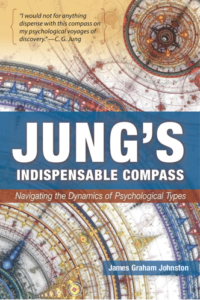“Do the meaning and value of the personality really lie only in what is permanent? May it not be that change, becoming, and development represent actually higher values than mere “defiance” of change?” – C. G. Jung (CW 6, par. 157)
The essence of Jung’s type’s theory is individuation—the fuller development of the unique, whole, unified personality. The subtitle for his seminal book on the types was The Psychology of Individuation.
The attributes of the types in Chapter 10 must be understood in the context of Chapters II and V, the two chapters Jung considered most important, and the two that consider oppositions and their union. The types are opposing dispositions of conscious and unconscious elements of the whole psyche—a psyche inherently seeking wholeness.
If one is born to an introverted disposition, the voyage of individuation will integrate the active waters of extraversion. And if one is born to an extraverted disposition, the voyage will integrate the quiescent waters of introversion.
And how is that voyage undertaken? The union of opposites occurs through the guidance of the Self and the aid of the transcendent function.
The ego may seem to know the way, but the way of the opposite in the unconscious is unknown to the ego—unfamiliar and foreign. The ego may attempt to exercise the inferior dispositions—improve a weakness, patronize the inferior—but the union of opposites is not born from the ego’s condescensions; the union of these opposites is unpredictable and life giving.
An analogy may help to clarify the difference. Consider the caterpillar, the chrysalis and the butterfly. The perpetual aim of individuation is to engender a “third”—an unpredictable union of opposites—the butterfly from the chrysalis. But the ego, in this analogy, the caterpillar, knows only its many legs. It may strengthen the weaker legs, the ones it considers inferior, but strengthening the legs only allows the caterpillar a little more momentum. The weaker legs are still in service to the control of the caterpillar.
Individuation occurs in the chrysalis, where the ego has lost control, where the Self takes over the leadership. Only in the chrysalis of the Self and transcendent function, where the ego knows not the way, are the types unified to engender the utterly unpredictable—the emergence of unique personality—a person less centered in the ego’s one-sided identity, and more centered in the pattern potential of the Self.
What the union of opposites really “means” transcends human imagination . . . But if he no longer sees the meaning of his life in its fulfillment, and no longer believes in man’s eternal right to this fulfillment, then he has betrayed and lost his soul, substituting for it a madness which leads to destruction, as our time demonstrates all too clearly. —C. G. Jung (CW 14, par. 201)

